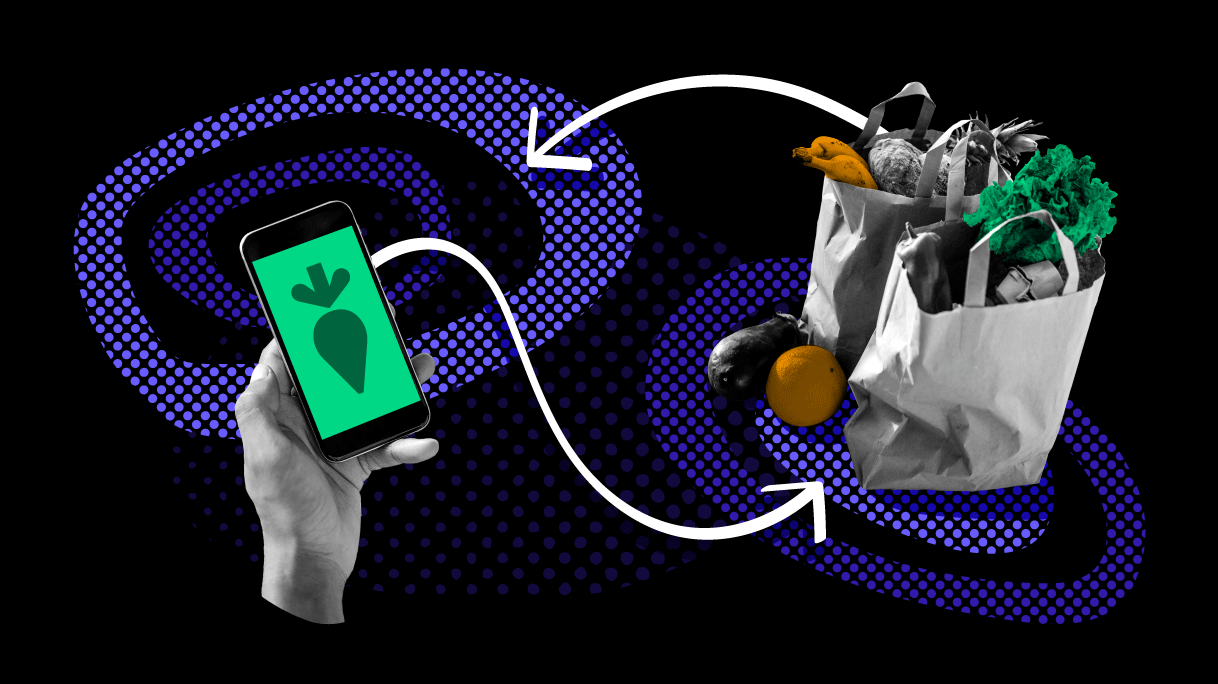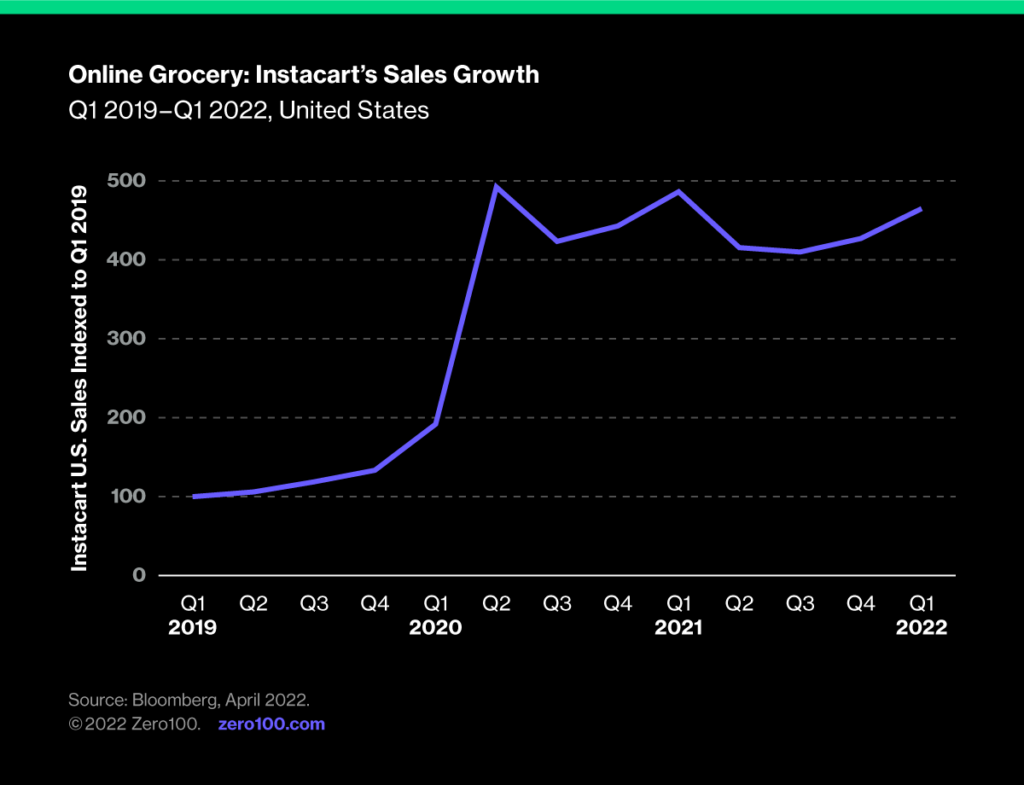
Instacart IPO: Bullish on Last Mile Delivery
As Instacart’s looming IPO tests ongoing market volatility, Kevin O’Marah dissects the online grocer’s potential superpower—capturing market share of last mile delivery from logistics giants UPS and FedEx.
Nearly alone in a sea of IPO anxiety, Instacart is ready to go public. The e-commerce/gig-economy/last-mile grocery pioneer is down 40% from the $39B valuation hit in its last round of financing but betting that the current plateau of demand is the start of good times rather than the last gasp of a COVID-driven spike. I'm with them.

Home Delivery Is Here to Stay...and Grow
Back when Bezos was selling just books it was logical that only special categories would work in an e-commerce direct-to-consumer business model. Now, a quarter century later, everyone from Aldi to Petco is ready to deliver directly to my home in under an hour. Not only that, if I wanted to outfit my home office with a new desk, chair, and printer I could order from Office Depot and have it delivered same day. Of course, I can also get a McDonald's burger, a case of wine and gas grill delivered with minimal effort.
As consumers, we are now accustomed to looking for essentially everything online first. That doesn't mean we need it all delivered to our doorsteps, and it certainly doesn't mean we need it immediately. It does mean, however, that unlike old-school store-based retail, we have multiple fulfillment options available at the point of purchase. Buy-online-pick-up-in-store is a huge win for some shoppers, just like 15-minute delivery (a.k.a. Quick Commerce) is for others and subscribe-and save is for others.
In response, mega-retailers like Walmart, Carrefour, Lowe's, and CVS have developed a plethora of fulfillment options including big & bulky, auto-replenish, and third-party delivery services. The pricing and terms vary widely, and although consumers sometimes abuse it or misunderstand what they're buying, the fact remains that optionality in last mile delivery is exploding.
COVID Hangover or COVID Slingshot?
E-commerce sales are down now that COVID is fading, and Instacart's slower growth is logically linked as a source of concern. But the difference between classic parcel businesses like UPS or DHL and Instacart is more important than the similarities. Instacart's growth in customer count (up 20% YoY in 2021), revenue (up 20%) and retail partners (up 25%) are still smashing. The whack to their valuation may reflect a worrying post-COVID hangover, but I'd bet the future is brighter for a business based on consumers' weekly grocery demand than the once-in-a-lifetime online shopping roller coaster of 2021.
Instacart's story is about explosive but balanced innovation in the digitization of demand (selling to customers) and its corresponding digital supply response (fulfilling orders). This means they not only keep improving the offer made to shoppers, but also the operational ability to deliver. As a platform, Instacart now has over 750 retailers on board and offers them a nearly turnkey response to shoppers' expectations for e-storefronts, order tracking, special handling and much more.
They also recently entered the advertising business and are poised to graduate from gig-economy bolt-on to digital age institution. COVID sped this transition way up, kind of like the way Apollo 13 used the gravity of the moon to slingshot itself back home in 1970. Neat trick if you can pull it off.
Unfulfilling Fulfillment
So, I'm bullish on Instacart for its tech, its timing, and its courage to go IPO now...but I do see an Achilles heel: people. My son was an Instacart shopper, and while it looks better now than it did before COVID, the fact remains it is not easy work.
The cool thing about gig-economy business models is their flexibility, but as Amazon Flex taught us, (not to mention Uber, Airbnb, and many others) this comes with some reliability problems. Instacart is working on this and adding new shoppers in droves, but will they stay? More important, will they develop the human skills needed to fill the gaps automation can't get to?
It will work if Instacart's shoppers buy into the “be your own boss” pitch and actively contribute to the process and tech enablement the company is building into its platform. In any case, the takeaway for supply chain leaders is that human labor is not as fungible as many gig-economy cheerleaders would have you believe.
My bet is that Instacart will turn its innovative tech toward the people problem and come out of the COVID crucible as a long-term winner.
Critical Reading
THE VERGE
DoorDash Won't Deliver Walmart's Groceries Starting Next Month
Commentary: Walmart has been busy bringing delivery capabilities in-house by building out its own platform – which already accounts for 75% of its deliveries and services 84% of households in the US. Meanwhile DoorDash will take on a new challenge – working with Facebook Marketplace.
#delivery #walmart
SUPPLY CHAIN DIVE
Major FedEx Ground Contractor to Stop Delivering if Agreement Isn't Reached by Black Friday
Commentary: Patton Logistics founder, Spencer Patton, has said that he will stop operating his 225 delivery routes spanning 10 states if FedEx does not improve compensation to account for inflation and other operational changes.
#logistics #fedex
QUARTZ
Does 15-Minute Delivery Have a Future?
Commentary: Gorillas, an on-demand grocery delivery company promising to deliver groceries within 10 minutes, is one of the last ultra-fast delivery businesses left standing in New York.
#grocery #delivery